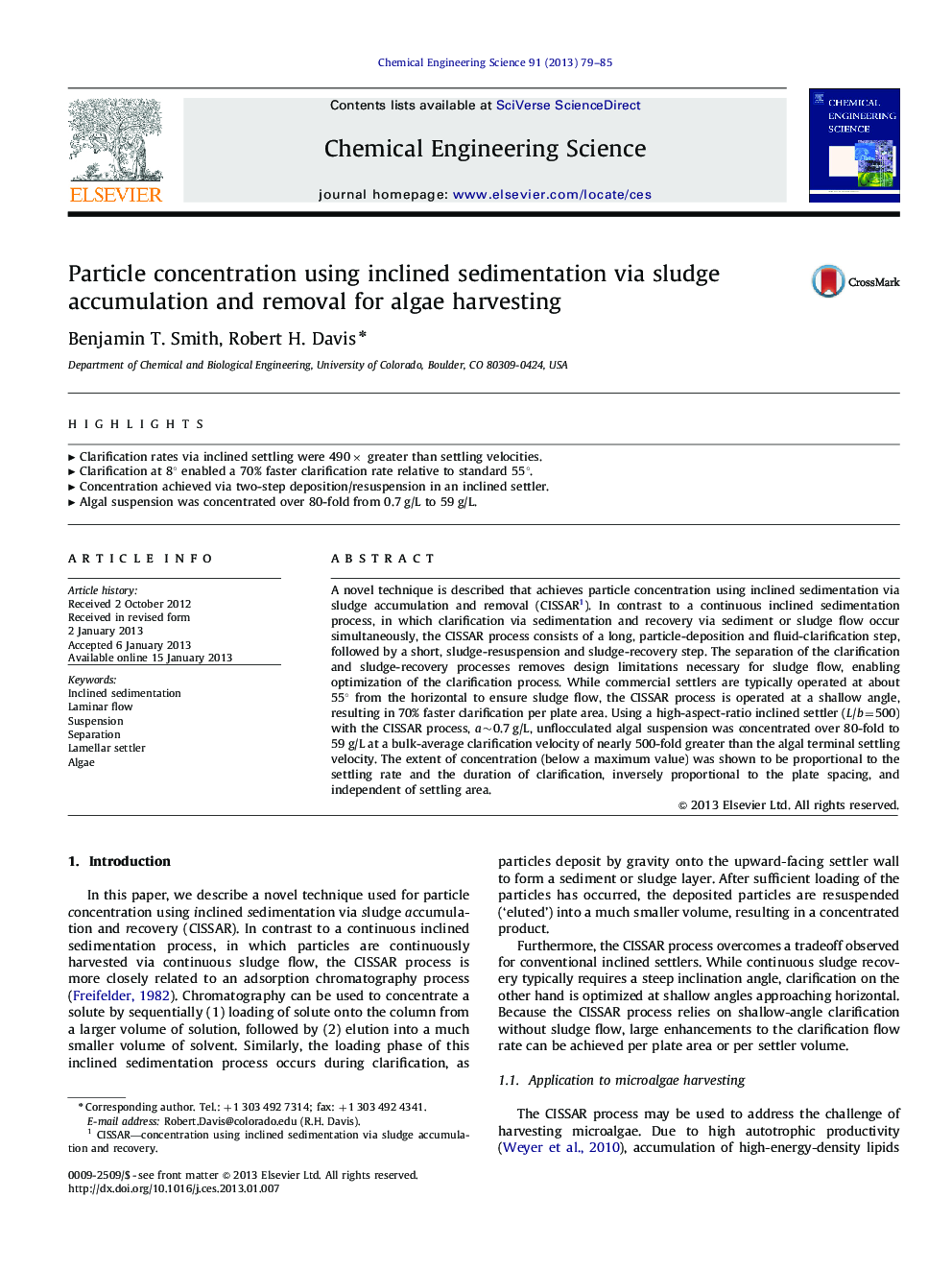| Article ID | Journal | Published Year | Pages | File Type |
|---|---|---|---|---|
| 155261 | Chemical Engineering Science | 2013 | 7 Pages |
A novel technique is described that achieves particle concentration using inclined sedimentation via sludge accumulation and removal (CISSAR1). In contrast to a continuous inclined sedimentation process, in which clarification via sedimentation and recovery via sediment or sludge flow occur simultaneously, the CISSAR process consists of a long, particle-deposition and fluid-clarification step, followed by a short, sludge-resuspension and sludge-recovery step. The separation of the clarification and sludge-recovery processes removes design limitations necessary for sludge flow, enabling optimization of the clarification process. While commercial settlers are typically operated at about 55° from the horizontal to ensure sludge flow, the CISSAR process is operated at a shallow angle, resulting in 70% faster clarification per plate area. Using a high-aspect-ratio inclined settler (L/b=500) with the CISSAR process, a∼0.7 g/L, unflocculated algal suspension was concentrated over 80-fold to 59 g/L at a bulk-average clarification velocity of nearly 500-fold greater than the algal terminal settling velocity. The extent of concentration (below a maximum value) was shown to be proportional to the settling rate and the duration of clarification, inversely proportional to the plate spacing, and independent of settling area.
► Clarification rates via inclined settling were 490× greater than settling velocities. ► Clarification at 8° enabled a 70% faster clarification rate relative to standard 55°. ► Concentration achieved via two-step deposition/resuspension in an inclined settler. ► Algal suspension was concentrated over 80-fold from 0.7 g/L to 59 g/L.
